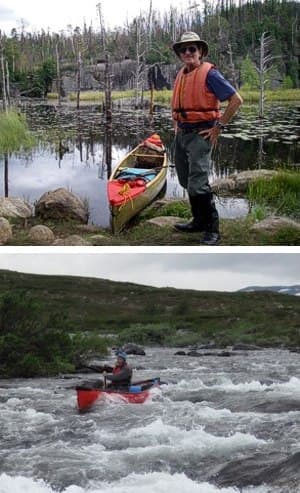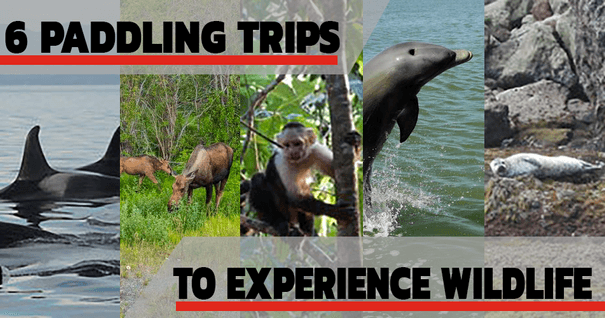Preparing for BWCA trip Vs. the Wild North
OK, so you've made many successful trips into the Boundary Waters and Quetico. You've never been lost - just confused for awhile. You've weathered storms, made fire in the rain, never capsized or been threateningly cold. Now you dream of canoeing a wild river in Canada or Alaska. Do your years of canoeing the Boundary Waters qualify you for a remote northern adventure?
Yes and no! Here's are some concerns and suggestions.

NAVIGATION
Rivers that flow into Hudson Bay are terribly confusing as they approach the Bay. Here, the delta sprawls amidst a mix of islands and dead-end channels. The flowage changes from year to year so maps can't be taken too seriously. Still, navigating the Boundary Waters can be equally confusing. Why? Because even the best BWCA maps are no match for detailed 1:50,000 scale Canadian topos. The Boundary Waters has plenty of islands, bays and channels to confuse you. In short, if you can read a map and compass well enough to confidently thread the BW's most complex lakes, you'll do fine in Canada or Alaska. However, you'll need to understand magnetic declination and contour line interpretation and, if you bring a GPS, the UTM system of positioning.
FIRE BUILDING:
The ability to make a fire in any weather marks you as an expert. If you can make fire on a rainy day in the Boundary Waters you can do it anywhere. Indeed, it can be more difficult in the BW than in other places because all the good wood on established campsites has been picked over. You may have to split logs to get at the dry heartwood in the center. But fire-making in Canada is easy because there's dead, downed wood everywhere. Barrenland trips are the exception, of course. Tip: Dead willow branches make fine tinder-a small rose clippers works better than a saw.
OPEN WATER CROSSINGS
Canoeing a big lake like Saganaga or Brule when the wind is up is similar to canoeing a big lake in Canada, with one exception: arctic waters are bitterly cold--a capsize is deadly! You just can't take chances. Boundary Waters paddlers often make a beeline from portage to portage. This procedure can kill you on a wind-tossed northern lake. It's difficult to estimate distance on tundra lakes because there are no trees for reference-a shoreline that appears to be a few hundred yards away may be a mile or more! Study your map before you commit to open water crossings!
COOKING SKILLS
Northern waters are very cold so your stove will use much more fuel. Two gasoline stoves are mandatory. You'll burn about one-tenth of a Liter of fuel per person per day. Pot "cozies" save the day. See my books, "Canoeing Wild Rivers, 30th Anniversary Edition," or "Basic Illustrated Cooking" for details.
PORTAGING
Some Boundary Waters portages are as tough or tougher than what you'll find in Canada. But Canadian trails are not cleared or marked. Bring tools to clear a portage (axe and saw) and bright-colored plastic surveying tape to mark the way; and ALWAYS scout the route before you carry anything across. Carry the canoe last, which is opposite of Boundary Waters routine!
DEVELOP JUDGMENT SLOWLY
It takes years to develop good judgment, but you can speed the learning curve if, when you canoe the BWCA, you get off the beaten path. For example, most paddlers blindly take every portage without checking the flowage into the next lake. Sometimes, you can line your canoe through the connecting rapid, but you won't know if you don't look. And by looking, you'll develop skill and judgment to handle the unknowns you'll face up North.
FEW SECOND CHANCES
A capsize in the Boundary Waters is usually just an inconvenience; on a cold northern lake, it may be fatal. When the weather turns sour in the BW, you can just hole up and wait for sun, later shortening your trip to make up for lost time. On a northern river, you're generally committed to a time frame: you must be at a certain place at a certain time to meet a charter plane or boat. This means you may have to travel when you'd prefer to camp, which increases risk. Yes, you may be able to change your itinerary if you have a satellite phone and can get reception. Rental phones are often problematic because their batteries (which are in constant use and re-charge) may not hold a charge for very long. Campsites, rapids and portages are not marked on northern rivers so every day is exploratory, and exploring slows you down. Indeed, the rule of travel "up north" is to allow "one day down in every five" for bad weather and the unexpected.
THE RAPIDS MAY BE HUGE, LONG AND DIFFICULT
You absolutely MUST be confident in Class II-III technical rapids. Portaging and lining aren't always an option. You can't learn whitewater skills by paddling lakes. Best take a class; you can learn a great deal in just one day. The "backferry" is the most important technique. Stress this to your instructor! You'll also need to practice "lining" your canoe around obstacles. There are some opportunities in the BWCA, but only if you have ropes attached to the ends of your canoe and get off the beaten path.
CLOTHING AND FOOTWEAR
Sandals and sneakers which work for the Boundary Waters are worthless on cold northern rivers. You need knee-high rubber boots, warm insoles and wool socks. Camp footwear should be tough enough for serious hikes. Clothes should be wool and nylon. Reliable rain gear is essential. Provide back-ups for everything.
PACKS
Packs must be waterproofed to the Nth degree for a Northern Expedition. The sloppy packing you may see in the BWCA can kill you up north. Also, a canoe spray-cover can be a life-saver.
Cliff Jacobson is a professional canoe guide and outfitter for the Science Museum of Minnesota, a wilderness canoeing consultant, and the author of more than a dozen top-selling books on camping and canoeing. www.cliffcanoe.com
Related Articles
I wasn't sure what travel was going to look like this winter, if there would be any travel at all.…
Even if the promise of travel seems to have gone awry, the pull towards a warm, tropical paddle…
View all Kayaking Locations in Lake Tahoe ► ► All of our Lake Tahoe paddling locations are from…
Experience wildlife with this handful of paddling trips. Dolphins and monkeys and bears, oh my! If you…



